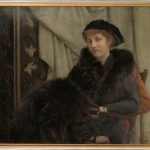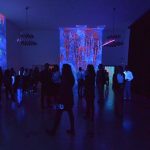Together with Vlaho Bukovac, two years older than himself, Mato Celestin Medović is the founder of Croatian modern painting, and one of its most highly valued representatives. He was born in1857 in Kuna, a village on the peninsula of Pelješac. After a year of education at the Franciscan Monastery of Our Lady of Loreto (Delorita) on Pelješac, in 1868 he left for the monastery of the Minorites in Dubrovnik, where he entered the novitiate. There, he started doing drawings and painting in oil, and in 1880 went off to study painting in Italy. He had private lessons in Rome from 1880 to 1882, and then from 1883 to 1884 in Florence.
In 1886 he returned to Dubrovnik, but aware of the shortcomings of his incomplete training he went to the Academy of Fine Arts in Munich. The three last years spent in the class of Wagner left the deepest trace from this period, in the spirit of the decorative historical compositions of Karl Piloty. He spent 1893 to 1894 in Dubrovnik and Kuna, and left the order. After Munich, his conception for the making of religious paintings underwent fundamental modifications.
Details of setting were rejected, and the paintings were dominated by the monumental figures of the saints. He spent 1895 to 1907 in Zagreb, where under the influence of the plain air thinking and rich colourism of Bukovac he changed his brushstroke and invigorated his colors. He is the first of the modern Croatian painters to have emancipated still life as a free standing subject, which also goes for landscape, which he mainly painted on Pelješac.
This new visual expression was transferred also to the historical compositions, to paintings with religious subjects and portraits. In 1908 when he returned to his native Kuna, a new period in the painting of Celestin Medović started, forming what is called the Pelješac phase where he almost entirely painted landscapes, abounding in the bright souther light an in vigorous colors, with which he made his greatest contribution to Croatian painting.









